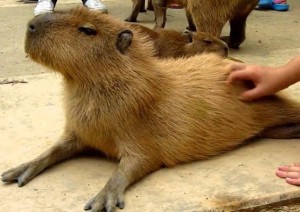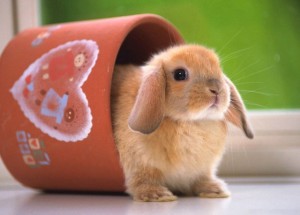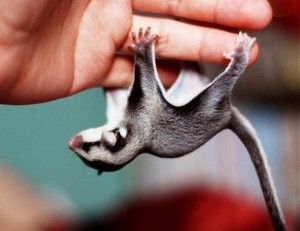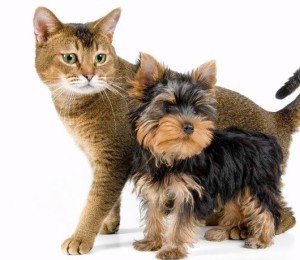How dangerous is psittacosis? Veterinary laboratory
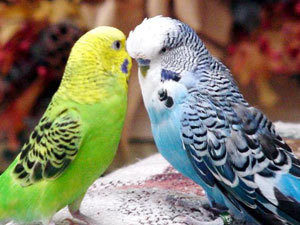 Pathogen — neorickettsia (chlamydia), in their evolutionary development they are between bacteria and viruses.
Pathogen — neorickettsia (chlamydia), in their evolutionary development they are between bacteria and viruses.
The source of infection is often a sick bird — a virus carrier, releasing the microorganisms from nasal mucus, sneezing, coughing, with the dung. Infection occurs by airborne and alimentary, particles of dried droppings from sick birds, downs, slomannye the epithelium of the skin can get into the lungs, air sacks of birds and gastro-intestinal tract and there penetrating through the mucous membranes, causing the disease. A bird ill with psittacosis, usually for a long period of time remains a virus carrier.
Reservoir and source of infection for humans are domestic and wild birds. The largest epidemiological significance have Pets poultry (especially ducks and turkeys), room birds (parrots, wavy parrots, Canaries and other small songbirds) and especially urban pigeons and crows, the infestation of which ranges from 30-80%.
Ill persons who are constantly in contact with birds (poultry workers, meat processing plant, breeders of birds, etc.) the Ill person primarily middle-aged and older, children get sick much less often. Patients with psittacosis not a danger to others represent. In the human body, the pathogen enters mainly through the mucous membranes of the respiratory system. Infection occurs by inhalation of dust containing chlamydia (dried particles of bird faeces and discharge from the beak, contaminated particles down, etc.).
How does infection occur?
If household infection observed sporadic (individual) cases, although they may be small, usually family outbreaks, which develop shortly (1 to 2 weeks) after purchasing new birds. The infection can also be brought with food for her. The causative agent is excreted in faeces and discharge from the nose of the bird. Dried particles of mucus and faeces fall on the feathers and fluff, mixed with the dust. Up to 10% of HIV infections occur by the fecal-oral mechanism of transmission. In the human body the causative agent penetrates through the mucosa of the respiratory system. The upper respiratory tract is usually absent, but in the bronchi changes appear quite early.
Pigeons are affected more often than other bird species and play a major role in the spread of infection. The hatchlings have noted diarrhea, poor feathering, retarded growth. In adult pigeons, the disease is characterized by nasal discharge, conjunctivitis, lacrimation, and wheezing.
Adult parrots note the lack of appetite, drowsiness, conjunctivitis, weakness, profuse diarrhea, leading to wasting and death. The young birds often bilateral conjunctivitis, the exudate of the beak and the cere develops photophobia, diarrhea, with the droppings may be green and yellow. In adults in addition to these characteristics, note the inflammation of pneumatic sacs, paralysis of the extremities of the legs. Death can occur in 1-2 weeks.
In humans the Clinical picture and course of psittacosis are not always the same. The incubation period ranges from 7 to 14 days and more. The disease may begin acutely, with chills and temperature increase up to 40, 5*C. or gradually, with rise of fever for 3-4 days. Characterized by sudden headache, loss of appetite, delayed stool, sometimes bursting pain in the whole body. By the end of the 1st week is defined enlargement of the liver and spleen.
Often there is a sharp dry cough, with progression of disease appears a small amount of mucous or bloody sputum. The cough may appear immediately or within 5 days after onset of fever. When the infection from parrot psittacosis runs longer and harder than when the infection from domestic poultry and pigeons.
Clinical signs of the disease:
rhinitis;
shortness of breath;
spasms when breathing;
lack of appetite;
weakness and drowsiness;
slow reaction;
diarrhea;
exhaustion;
conjunctivitis;
paralysis of the limbs;
the peritonitis.
Prevention of psittacosis in birds
Just brought into the house the parrot should be kept in quarantine for 1-3 weeks.
With the appearance in the aviary of cases of psittacosis all sick bird should immediately be isolated, and birds exposed to her in a quarantine cage and give them prophylactically antibiotics.
Uneaten food and bedding of the sick with psittacosis parrots need to destroy (burn), inventory immersed in a solution of disinfectant.
Prevention of psittacosis in humans
If you suspect psittacosis parrot it is necessary to observe safety precautions.
Before you enter the room that contains a sick bird, you should wear protective clothing and a mask.
Outside the room, protective clothing to remove and disinfect, and hands and face are thoroughly washed with soap and water.
The corpse of a dead parrot should be wrapped in a disinfectant-soaked gauze and sent to the laboratory.
Inventory, helping care for a sick bird should be thoroughly disinfected.
The house and the area in front of them should be cleaned daily with disinfectant preparations 1)When dealing with suspicious bird, use gloves and a gauze bandage. Observe measures of personal hygiene. Every day clean litter, not allowing it to dry and turn into dust. The bird surveyed to keep in a cage
